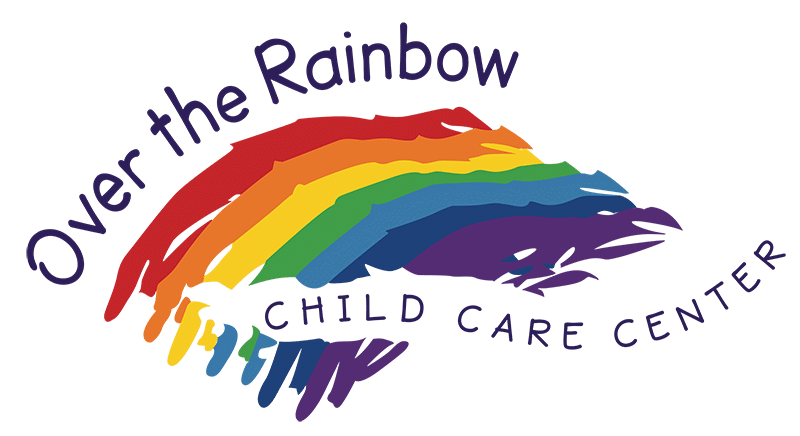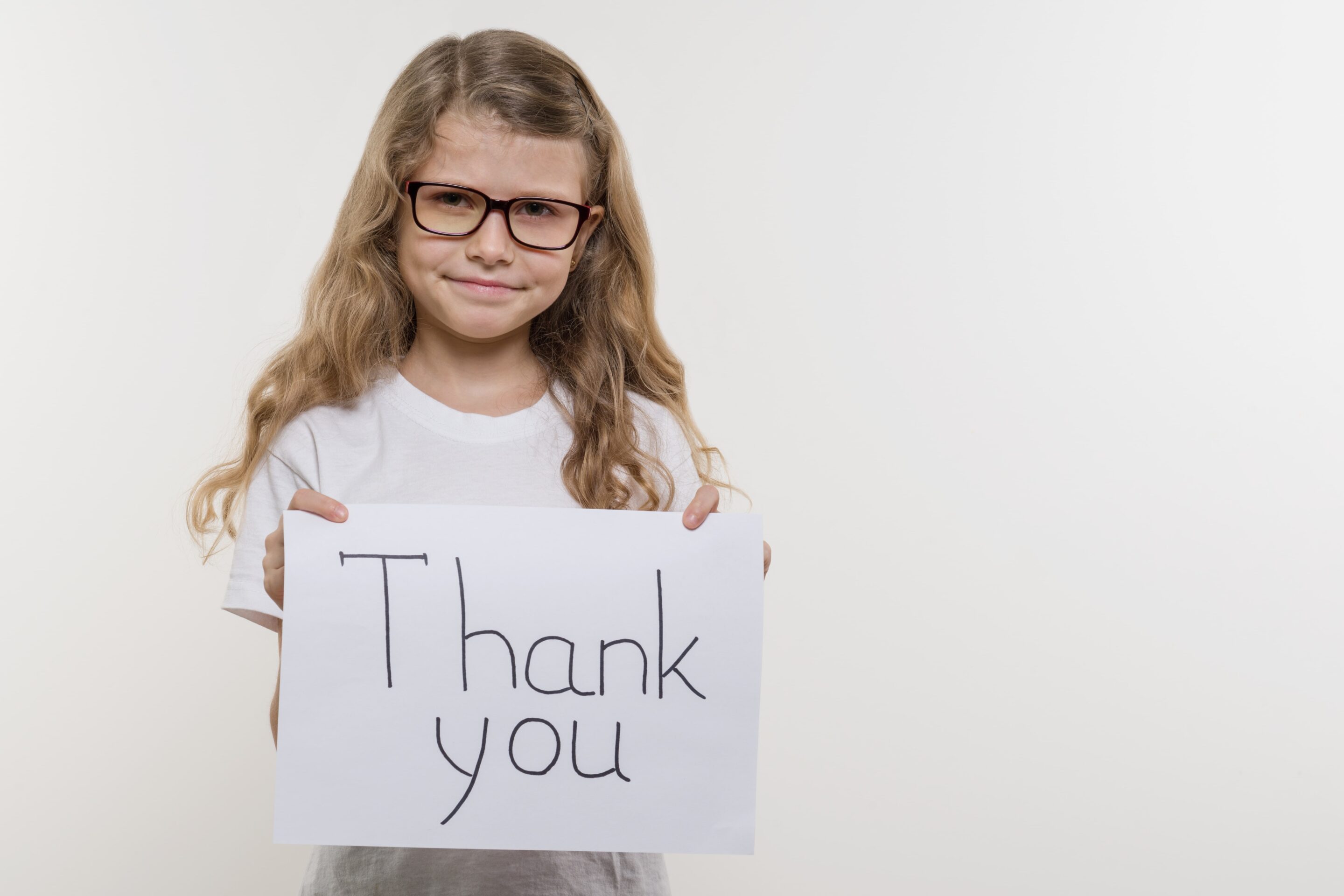Gratitude doesn’t begin with thank-you notes or polite table manners. It starts much earlier, in the warm interactions and emotional safety we provide from the very start of a child’s life. While infants may not understand the word “gratitude,” they are constantly learning through connection, tone, and repetition. They notice how we respond to their needs. They feel comfort in our presence. And over time, those interactions create a secure foundation for empathy, joy, and appreciation to grow.
As children grow into toddlerhood, preschool, and kindergarten, their understanding of gratitude begins to take shape in more visible ways. They start to notice kindness, show affection, and mimic what they see. That’s why it’s so important to begin planting the seeds of gratitude early on, even before they have the words to express it. This blog offers simple, everyday ways to help infants and young children begin developing a thankful heart.
Model Gratitude in Everyday Moments
Infants are watching and listening long before they can respond with words. Every time we say “thank you” with a warm tone or smile at someone who helps us, our little ones are learning what gratitude looks and sounds like. You might be surprised at how quickly they begin to mirror your behavior. A baby who babbles back when you say “thank you,” or a young child who imitates a hug they saw you give, is already building connections between actions and emotions.
For older children, it’s helpful to model gratitude in real-time by narrating what you’re thankful for. “I’m so happy we get to play together this morning,” or “That was kind of Daddy to bring us snacks!” These comments help make thankfulness visible and relatable. The more children hear us express appreciation for both big things and small things, the more likely they are to do the same. You don’t need to make it a big lesson. Just stay consistent and let gratitude become part of your everyday language
Turn “Thank You” Into a Habit, Not a Demand
It’s tempting to prompt kids constantly with reminders like, “What do you say?” after they’re given something. While that’s a common parenting moment, it’s important to remember that gratitude is a feeling first, not just a phrase. Forcing a quick “thank you” can sometimes make it feel like an obligation rather than something meaningful.
Instead, look for natural ways to encourage the habit. With young children, model it by saying “thank you” to them throughout the day: “Thank you for handing me that block!” or “Thanks for your help cleaning up.” This shows them that appreciation is something we give freely, not just something we expect from them.
For infants, your tone and repetition do the teaching. Even if your baby doesn’t understand your words, they’ll associate your warm smile and voice with something positive. Saying, “Thank you for waiting while I got your bottle” or “Thanks for those sweet snuggles” reinforces the rhythm and emotion of gratitude from the very beginning. With consistent practice, “thank you” becomes a part of your child’s natural communication.
Help Them Notice Kindness
Children learn to be grateful by first learning to notice. That’s where we come in.
From the baby who lights up when you greet them in the morning to the kindergartner who watches a friend share a toy, these are opportunities to help them observe kind actions. With infants, you can describe what’s happening around them in simple, loving language: “Look how gently your brother gave you the toy. That was kind!” Even though they might not understand all the words, they begin to connect tone, emotion, and behavior.
As children grow, their awareness sharpens. When you see acts of kindness, name them out loud. “She helped you zip your jacket, wasn’t that helpful?” or “I saw you pat your friend’s back when they were sad. That was so thoughtful.” These small observations help children learn to connect positive actions with emotions like happiness, comfort, and appreciation. Helping children notice kindness isn’t just about gratitude—it’s the first step toward emotional intelligence.
Use Storytime to Spark Conversations
Books are one of the best ways to introduce complex ideas in a way that feels fun and familiar. Whether you’re snuggling with a baby on your lap or reading to your little one before bed, stories help young children connect with characters and situations that reflect their world and teach values like gratitude in a way that sticks.
Choose books where characters show appreciation, help others, or learn the value of giving. For infants and toddlers, look for board books with simple pictures and messages like The Thank You Book by Danna Smith. For older kids, try The Thankful Book by Todd Parr.
After reading, keep the conversation simple: “What are some things you’re thankful for today?” Let your child ask questions, too. You might be surprised by what they notice and how deeply they understand. Books also give you a shared language to use throughout the day. A phrase from a story can become a family saying that helps reinforce gratitude long after the book is closed.
Create Simple Gratitude Rituals
Gratitude doesn’t have to be saved for the holidays. It grows best when it’s part of our daily rhythm. One way to do this is by creating simple gratitude rituals—small habits that help your child reflect and share.
For babies, start by including gratitude in your daily talk: “I’m so thankful for you,” “We had such a happy walk today,” or “That cuddle made my day.” Your tone and consistency matter even more than the words themselves.
Children who are a little older can participate more actively. Try sharing “one good thing” at the dinner table or during your bedtime routine. Encourage them to name something that made them happy, surprised them, or helped them. You could also create a family “thankful jar” or “gratitude wall” where you add pictures, drawings, or words throughout the month.
Involve Kids in Giving
Gratitude deepens when children are part of giving, not just receiving. Even the smallest gestures like helping pick a flower for a neighbor, choosing a toy to donate, or stirring the cookie batter for a gift can help little ones feel the joy of contributing.
For infants, the act of giving starts with shared interactions. You can help them “give” a toy to a sibling or a smile to a teacher, praising and encouraging their participation. These early moments lay the groundwork for future generosity.
Young children love to be involved. Let them choose a can for a food drive, decorate a card for someone they love, or help you bake something special. Talk about why you’re doing it: “We’re giving these cookies to someone who works hard to keep us safe.” Older children can take an even bigger role, helping brainstorm ways to help others, coming up with what they’d like to share, and reflecting on how it made them feel. Encouraging children to be part of acts of kindness teaches them that they can make a difference and that giving feels good, too.
Manage Disappointment with Empathy
It’s easy to talk about gratitude when everything is going well. But when things don’t go as planned, children—especially very young ones—need support to manage those big feelings. And that’s where some of the most powerful learning happens.
Infants and toddlers often show disappointment through fussiness or tears. Instead of rushing to distract or minimize their feelings, try naming what they’re feeling: “You really wanted that toy. It’s hard when we have to wait.” This helps them feel understood and lays the foundation for emotional regulation.
For older children, disappointments may look like tantrums, frustration, or withdrawal. Validate their emotions first: “It’s okay to feel sad we didn’t get to go to the park.” Then offer perspective gently: “We’ll try again another day. I’m thankful we had time to read together instead.” When we model patience and understanding, children learn that it’s okay to feel upset and that those feelings don’t cancel out all the good in their world. Over time, this helps them build a more balanced view of life—and with it, a deeper capacity for thankfulness.
Gratitude Grows in Small Moments
Raising a thankful child isn’t about grand gestures or perfect behavior. It’s about what we say and do in everyday life—how we respond to our children, how we speak to others, and how we handle both joy and disappointment. Gratitude starts with connection. And when you take time to notice the good, talk about it, and involve your child in simple acts of appreciation, you’re shaping how they experience the world.
Whether your little one is just learning to smile or confidently zipping up their backpack, they’re watching you, listening to you, and learning from every interaction. And with your guidance, their hearts will grow full—not just of words like “thank you,” but with a deep sense of belonging, empathy, and joy.
At Over the Rainbow, we believe in helping children grow not only in knowledge and skills but also in character. Gratitude, kindness, and connection are at the heart of everything we do. If you’re looking for a place where your child will be seen, valued, and supported every step of the way, we’d love to meet you.
Schedule your tour today and discover why Over the Rainbow is a place where children and gratitude grow every day. Call us at 860-637-3363.


